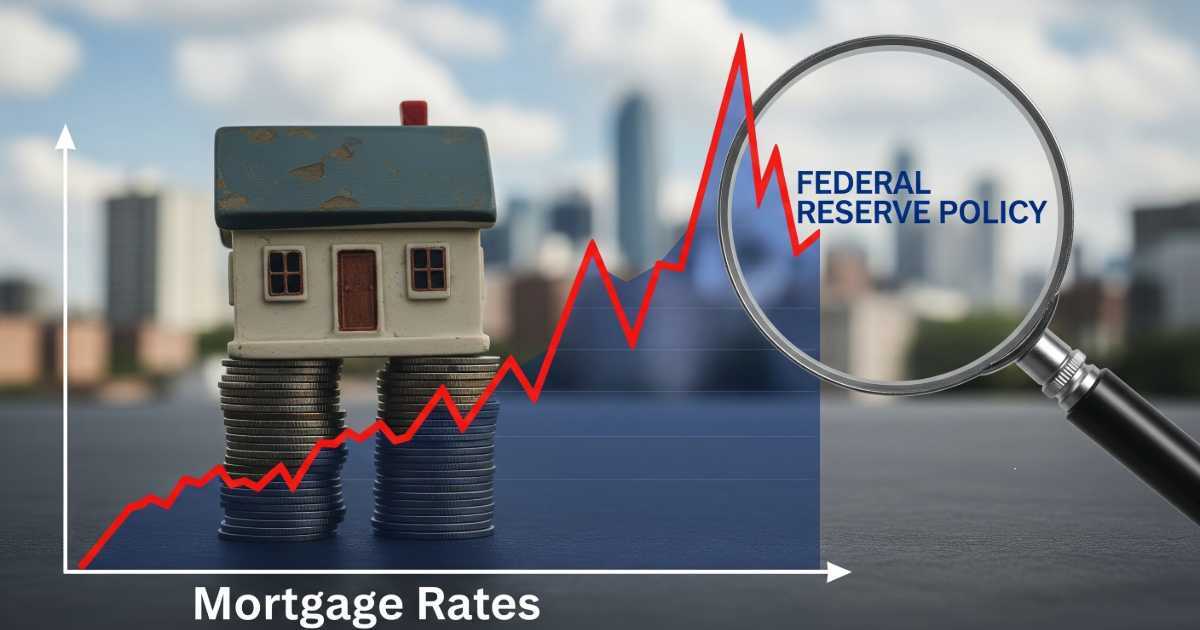Hello, Property Pros! 👋
We're kicking off the week with a fresh look at the shifting tectonic plates beneath the U.S. housing market. The big theme? Adaptation. From the Federal Reserve's careful signals impacting mortgage rates to tech giants swallowing up brokerage firms, the industry is recalibrating for a high-rate, inventory-constrained reality.
We’ve sifted through the noise to bring you 25 need-to-know headlines. Get ready to lead the conversation at the water cooler (or the Zoom room) this morning!
Top 25 Housing Market Headlines
💰 Finance & Lending
30-Year Fixed Mortgage Rates Hit 6.22% Following Fed Chair Powell's Comments. Rates climbed 5 basis points to 6.22% for the week ending November 6th, as markets adjusted expectations following recent commentary from the Federal Reserve dampening hopes for an immediate December rate cut. Realtor.com
October 2025 Homebuyers Save $106 Monthly Compared to Prior Year Due to Easing Rates. Buyers who secured mortgages in October 2025 are seeing monthly savings compared to those who bought in the same month of 2024, reflecting improving, albeit slow, affordability. Forbes
Treasury Report Indicates Weak Housing Sector Despite Broader U.S. Economic Resilience. The Treasury Borrowing Advisory Committee (TBAC) reported that the housing sector remains weak, evidenced by recent drops in single-family starts and permits, even as other segments of the economy show resilient activity. Treasury.gov
Experts Predict November 30-Year Fixed Mortgage Rate Will Average 6.375%. Analysts anticipate that mortgage rates will remain steady in the mid-to-low 6% range this month, citing the Fed’s conservative approach and the current moderation in inflation. The Mortgage Reports
10-Year Treasury Yield Settles at 3.65%, Setting the Benchmark for Long-Term Mortgage Pricing. The yield on the 10-year Treasury note, a key benchmark for 30-year fixed mortgages, closed the week at 3.65%, indicating stable—though elevated—borrowing expectations. Federal Reserve Board
🏗️ Construction & Supply
New Single-Family Home Sales Jump 20.5% in August, Hitting an 800,000 Annualized Rate. Sales of new houses rose significantly in August 2025, reaching a seasonally-adjusted annual rate of 800,000 units, demonstrating strong buyer appetite for new construction. U.S. Census Bureau
Builder Survey Reveals 64% of Firms Report Severe Shortage of Available Lots for New Projects. Homebuilders continue to face acute supply constraints, with a large majority reporting that the lack of developed lots is the primary bottleneck preventing accelerated home production. American Action Forum (AAF)
Labor Shortages Increase Average Home Construction Time by Nearly Two Months. The persistent skilled-labor shortage in the construction sector is extending the time required to complete single-family homes by an average of 1.98 months, adding to costs and delivery delays. American Action Forum (AAF)
New Home Inventory Remains Below Balanced Market Levels Despite Inventory Pile-Up from Sluggish Sales. Although total housing inventory has been rising due to the slow pace of sales, the overall supply level is still insufficient to create a truly balanced market favoring buyers nationally. Bankrate
Speculative Home Supply Rises to Highest Level Since 2008, Reaching 385,000 Units. The number of homes being built without a specific buyer in mind (speculative homes) has reached its highest point since the 2008 financial crisis, signaling increased confidence from large builders. J.P. Morgan
🏛️ Government & Policy
New Federal Bill Proposes Mortgage Forbearance for Employees Affected by Government Funding Lapses. Legislation was introduced in the Senate Banking Committee on November 7th to protect federal workers with certain mortgage loans from default during future government shutdowns or appropriations lapses. LegiScan
Federal Funding Lapse Causes Prorated, Partial November HAP Payments to Landlords in Georgia. The ongoing federal funding lapse is disrupting Housing Assistance Payments (HAP) to landlords in Georgia, who are advised that tenants cannot be charged for the public housing authority's delayed portion of rent. Georgia Department of Community Affairs (DCA)
Treasury Releases Final Resources for Tribal Governments Closing Out Homeowner Assistance Fund (HAF) Awards. The U.S. Department of the Treasury provided guidance to Tribal Governments to assist in the final closeout of Homeowner Assistance Fund programs before the September 30, 2026, deadline. U.S. Treasury HAF
Connecticut Governor Calls Special Session to Advance Legislation for Housing Growth and First-Time Buyer Accounts. Governor Ned Lamont mandated a special legislative session starting November 12th to push for bills that include municipal housing growth plans and state-level first-time homebuyer savings accounts. CT.gov
Congress Considers New Measures to Ease Affordability Crunch in the Housing Market. Lawmakers are reviewing several proposals aimed at addressing housing supply and cost, reflecting a continued national focus on the crisis of affordability. LegiScan
💹 Local & Market Trends
San Francisco New Home Market Leads U.S. with 13.7% Year-Over-Year Performance Index Gain. The San Francisco metro area showed the strongest annual gain in the new home market index, suggesting a robust rebound in high-demand West Coast regions. Zonda
Baltimore Metro Area Records U.S.'s Worst New Home Performance Index, Dropping 31.4% YoY. In contrast, the Baltimore metro area registered the steepest annual decline in the new home market index, reflecting severe localized volatility and inventory challenges. Zonda
Housing Market Stagnation Projected to Continue Across Most MSAs as Buyers Wait for 5% Mortgage Rates. Market analysts believe many Metropolitan Statistical Areas (MSAs) will remain largely "frozen" until mortgage rates consistently drop below the 6% threshold, closer to 5%. J.P. Morgan
Inventory Crisis: Housing Recovery Depends on a "Considerable Increase" in Homes for Sale, Easing Price Pressure. Market experts state that a true national recovery hinges on a significant influx of inventory to relieve upward pressure on home prices, a condition yet to be met in most local markets. Forbes
National Home Price Growth Slows to 6.3% by 2024 Year End, Moving Closer to Historical Norms. After extreme pandemic-era spikes, national home value appreciation is returning to a pace more in line with long-term historical averages, suggesting market stabilization. Construction Coverage
🧑💻Industry & Technology (PropTech)
PropTech Boom: AI Now Essential for Automating Lease Abstraction and Property Valuation. Artificial Intelligence (AI) has moved beyond novelty to become a critical tool for real estate professionals, streamlining time-consuming back-office functions like legal document analysis. AscendixTech
Corporate Real Estate Leaders Plan to Accelerate AI Investment in 2026, Prioritizing Data Readiness. A survey of Corporate Real Estate (CRE) leaders indicates a strong organizational commitment to boosting AI capabilities over the next five years, with data infrastructure cited as the primary focus area. JLL
Niche Asset Class Update: "Storage Condos" Emerge as a New Investment Hybrid within the Self-Storage Sector. Driven by shifting lifestyle trends and housing constraints, a new subsegment of investment—individually owned storage units—is gaining traction as an alternative asset. ULI Knowledge Finder
Office Market Bifurcation Widens: Top-Tier Assets Capturing Record Rents While Lower-Quality Stock Struggles. The office sector recovery is highly uneven; premier "trophy" buildings are seeing high rents, while older or less central properties face elevated vacancies and significant repricing challenges. PwC/ULI
Blockchain's Smart Contracts Set to Digitalize Property Transactions, Enhancing Security and Trust. The adoption of blockchain technology is expected to revolutionize transactions by enabling fully digitalized and secure property transfer through self-executing smart contracts. AscendixTech
Conclusion
So, what's the big takeaway? The housing market is essentially a high-stakes, multi-player game of Jenga: we’re seeing builders pull new construction pieces (Headline #6) while government policy tries to shore up the tower with protective planks (Headline #11). But the foundation remains wobbly, thanks to sticky rates (Headline #1) and the ever-present inventory squeeze (Headline #19). Stay nimble, watch the local trends (Headline #17), and let AI handle the lease work (Headline #21)!
Call to Action: Don't let your network miss out on this crucial market intelligence! If you found this digest valuable, hit the "Share" button and send it to three colleagues who need to know why 6.22% matters. Maximum reach means maximum influence!

